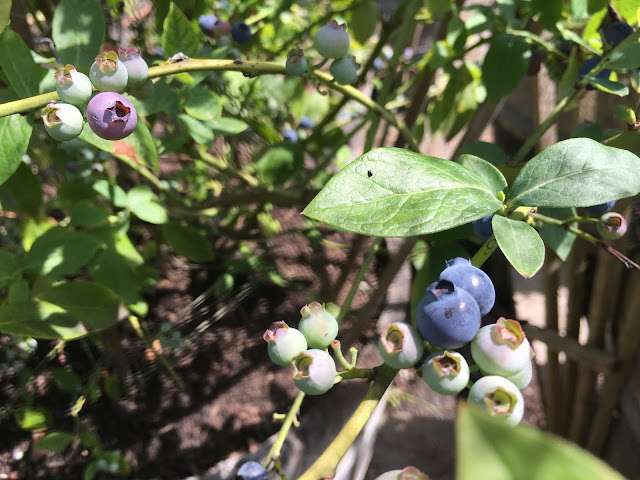I wake before sunrise to the sound of the male Guinea fowl crying his heart out.
His brassy, harsh alarm jerks me from sleep with an abrupt start. I don’t think
anything of it at the time, but he usually makes this call at
dusk after flying up into the branches of the walnut tree on the east side of
the house.
From the kitchen window I see he’s just a short distance from where the Guinea hen is nesting. She is hidden under camouflage of blackberry brier just behind the backyard fence. For weeks he’s been hanging close to her nest, ready to act as a diversion for any potential threat. He paces back and forth, pecking at tips of grass and weed, searching for tiny insects, scratching at the sandy topsoil with his powerful claws.
At mid-morning I water the vegetable garden, then decide to check in on the female. Instead of being greeted by the feathery outline of her dark folded wings or the tip of her bright orange beak poking out from under the ground cover, I encounter a grisly crime scene. The nest is empty except for a trail of scattered feathers, remnants of shell, and a smattering of blood. Now I understand the male’s morning (or mourning) call. I had become fast friends with this quirky couple, and now, much like him, I hated to lose her. I wanted to climb onto the tree branch right next to him and cry out loud.
Guinea fowl, or “Dodo birds” (as we have come to call them) are comical in appearance. Dr. Suess spindly-haired spigot of a neck and his brown feathered body plump and loafed like an Airstream trailer writes visiting friend Tania Pryputniewicz in a blog post after her first meeting with the birds. http://www.taniapryputniewicz.com/?p=3588 . While there are some serious drawbacks to housing these fowl, on the plus side, they are highly-valued by gardeners as insect-eaters, and praised for their low-maintenance lifestyle.
Lady Dō’s sudden tragic disappearance puts me in touch with the soft spot of my loss. I miss seeing her round shoulders clad in sheer dark feathers spangled with delicate white polka-dots; her featherless white head decorated with a reddish bony knob.













